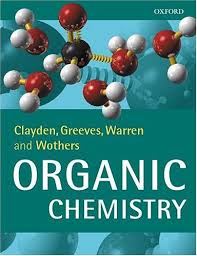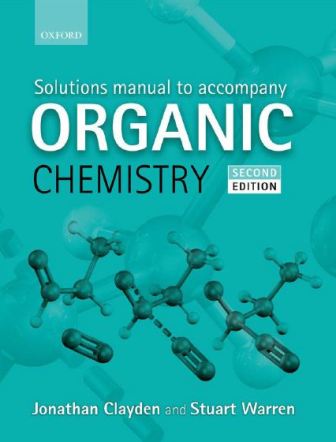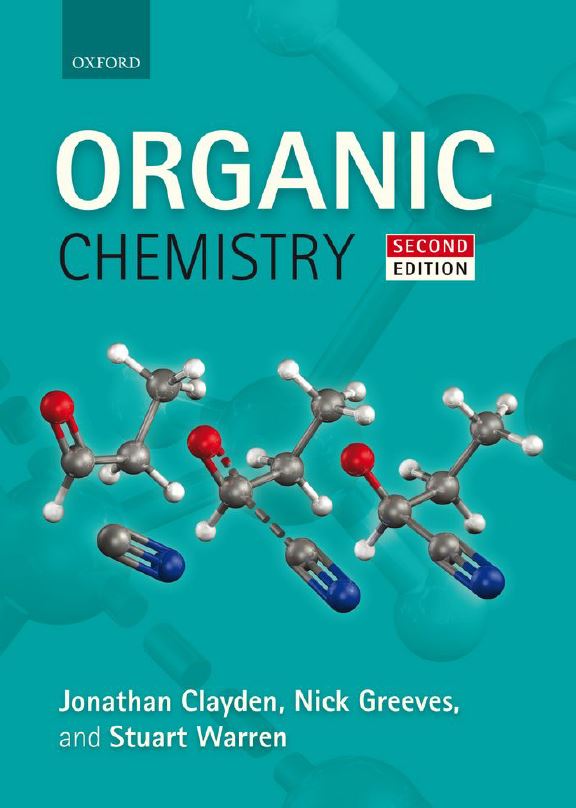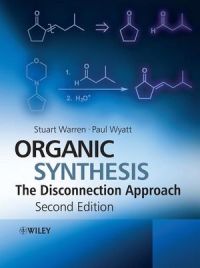 Clayden Organic Chemistry is written by Jonathan Clayden (Manchester University) Nick Greeves (Liverpool University) Stuart Warren (Cambridge University) and Peter Wothers (Cambridge University) and it is published by Oxford University Press in 2012.
Clayden Organic Chemistry is written by Jonathan Clayden (Manchester University) Nick Greeves (Liverpool University) Stuart Warren (Cambridge University) and Peter Wothers (Cambridge University) and it is published by Oxford University Press in 2012.
A new style of textbook, aimed principally at the European (and British in particular) student. It is needed because almost all current organic chemistry texts are written to a fixed American pattern. This text is different from these in a number of important ways: The approach is based on explanation rather than fact. The functional group approach (alkane, alkene, alkyne) has served American State College readers well but increasingly students and instructors are attracted more to an approach based on mechanism and reaction type. This approach aims at understanding rather than factual knowledge and, though slower at the start, eventually gives the student power to understand compounds and reactions never previously encountered. This is a big advantage in a science already too large for individuals to learn and which is annually expanding at an ever greater rate. The basics of the subject are explained carefully and thoroughly. How to draw molecules realistically and how to draw mechanisms to reveal the fundamental chemistry are both emphasised.
Table of Contents
- What is organic chemistry?
- Organic Chemistry and this book
- Organic structures
- Determining organic structures
- Structure of molecules
- Organic reactions
- Nucleophilic addition to the carbonyl group
- Delocalization and conjugation
- Acidity, basicity, and pKa
- Using organometallic reagents to make C-C bonds
- Conjugate addition
- Proton nuclear magnetic resonance
- Nucleophilic substitution at the carbonyl (C=O) group
- Equilibria, rates, and mechanisms: summary of mechanistic principles
- Nucleophilic substitution at C=O with loss of carbonyl oxygen
- Review of spectroscopic methods
- Stereochemistry
- Nucleophilic substitution at saturated carbon
- Conformational analysis
- Elimination reactions
- Electrophilic addition to alkenes
- Formation and reactions of enols and enolates
- Electrophilic aromatic substitution
- Electrophilic alkenes
- Chemoselectivity: selective reactions and protection
- Synthesis in action
- Alkylation of enolates
- Reactions of enolates with aldehydes and ketones: the aldol reaction
- Acylation at carbon
- Conjugate addition of enolates
- Retrosynthetic analysis
- Controlling the geometry of double bonds
- Determination of stereochemistry by spectroscopic
- Stereoselective reactions of cyclic compounds
- Diastereoselectivity
- Pericyclic reactions 1: cycloadditions
- Pericyclic reactions 2: sigmatropic and electrocyclic reactions
- Rearrangements
- Fragmentation
- Radical reactions
- Synthesis and reactions of carbenes
- Determining reaction mechanisms
- Saturated heterocycles and stereoelectronics
- Aromatic heterocycles 1: structures and reactions
- Aromatic heterocycles 2: synthesis
- Asymmetric synthesis
- Organo-main-group chemistry I: sulfur
- Organo-main-group chemistry II: boron, silicon, and tin
- Organometallic chemistry
- The chemistry of life
- Mechanisms in biological chemistry
- Natural products
- Polymerization
- Organic chemistry today
Free download Organic Chemistry by Jonathan Clayden, Nick Greeves, Stuart Warren and Peter Wothers in pdf from following external download link.
Sorry, this book is no longer available for download. But you can download hundreds of best-selling biology and chemistry books from HERE.
But you can download Oxford Organic Chemistry (2nd edition) written by Jonathan Clayden, Nick Greeves and Stuart Warren in pdf.
Size: 38.6 MB. Pages: 1469. Kindly read Disclaimer.
Don’t forget to download Solutions Manual of Clayden Organic Chemistry from here.
How to Download?
When you click on download button a new window will open. Click on Download Anyway on that window to download this book.


